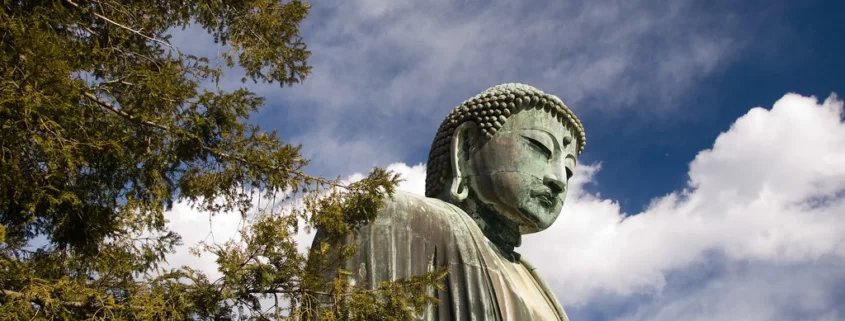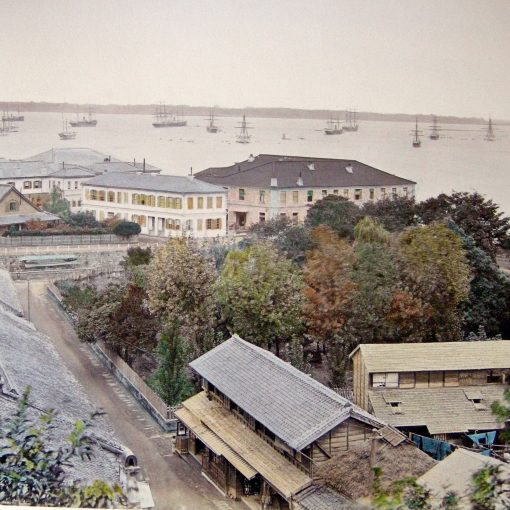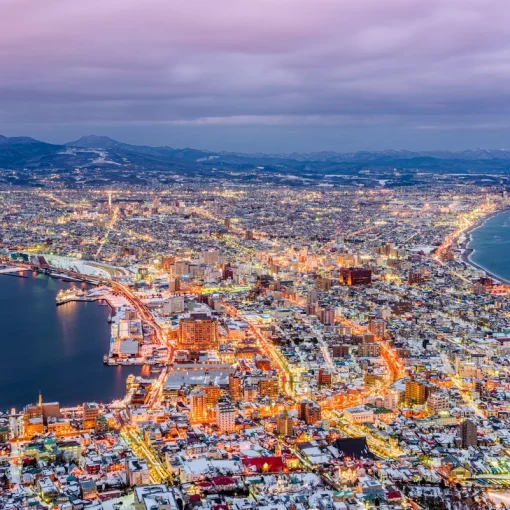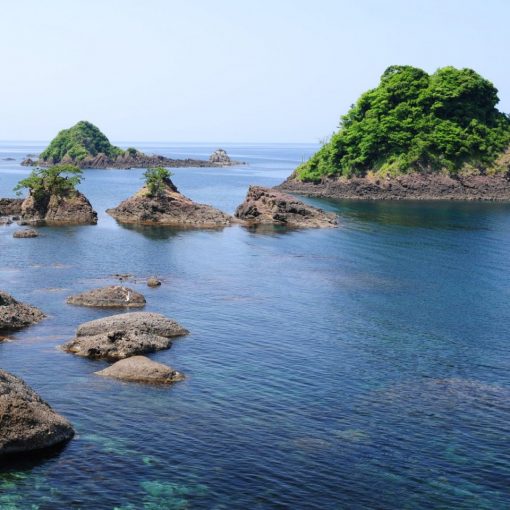A national treasure from the 13th century, the Giant Buddha of Kamakura attracts large numbers of both Japanese and foreign tourists. It is located on the territory of the Buddhist temple Kotoku-in (Kotoku-in) and differs in that it is located in the open air, while most of these statues were hiding in special rooms. The Big Buddha of Kamakura did not suffer from external influences, but its last hall was swept away by the tsunami.

From time to time, the gilding on the statue was only erased, leaving a slight sheen near the ears, and the rain over the centuries slightly changed its color and gave the surface a greenish tint. The bronze Buddha from the Buddhist temple of the Pure Land School has withstood numerous natural disasters. Among them is the Great Kanto Earthquake of 1923, during which the statue did not receive a single crack. Only its base was damaged, but it was restored two years after the tragedy.
Kotoku-in Temple, which houses the famous Big Buddha. This is a temple of the Jodo sect. The bronze statue was cast in 1252. Before that, there was a huge wooden statue, which took 10 years to make. However, both the statue and the pavilion were destroyed by a storm. We decided to make a Buddha out of metal. But again no luck. That pavilion was again destroyed by a storm in 1334. Then it was restored, after which it was again damaged by another storm in 1369 and repaired again. In 1498, a tsunami came… Since then, the Big Buddha has stood in the open air. True, the earthquake of 1923 destroyed the base on which the statue sits. It was restored in 1925.
What is interesting about the big Buddha
You can’t get to the giant Buddha on weekends and holidays, so it’s better to visit it on a weekday. Having bought a ticket to the temple for 200 yen and passing through the crowd, you will see a 13-meter deity sitting peacefully against the backdrop of evergreen mountains. It will meet with silence and harmony, even if it is noisy around. In addition to peace of mind, the Buddha surprises with skillful sculpture and reasonable design.
Walk around the statue and when you are behind it, look up. On the shoulder blades of a large Buddha, you will see a kind of wings, which are actually two open windows. At the foot of the monument, tickets are sold for 20 yen, allowing you to enter inside and find out about their purpose.

Once in the territory of Kotoku-in and having seen enough of the Buddha from the outside, find out how it works from the inside. At first you will be met by narrow stairs, darkness and visitors going outside. It does not hurt to read the technical details of the sculpture of the Buddha statue in English and Japanese on the luminous scoreboard. You can also feel the warm knee of the Buddha, which heats up on sunny days. While in the belly of the statue, you will see the aforementioned open windows, which help maintain the temperature of the air and contribute to the ventilation of the room.
Have lunch in the temple park. If you brought your own lunch box and drinks with you, sit down in the designated area and continue to enjoy the view of the Buddha and the natural surroundings. And after lunch, after saying goodbye to the deity, return to the modern bustling world and wander through the small narrow streets of Kamakura, the ancient capital of Japan.




